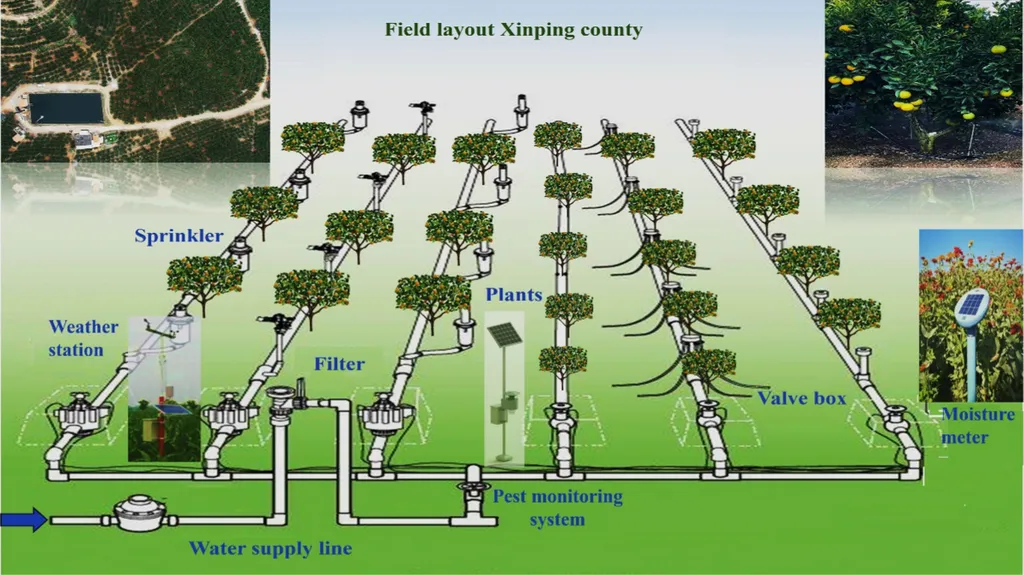In the heart of China’s citrus-growing region, a novel approach to monitoring water use in orchards is making waves, promising to revolutionize irrigation strategies and potentially reshape water resource management in agriculture. Led by Zhiwei Zhang from the College of Hydraulic & Environmental Engineering at China Three Gorges University, a recent study published in the journal *Agriculture* (translated from Chinese) demonstrates how unmanned aerial vehicles (UAVs) equipped with multispectral and thermal infrared sensors can significantly enhance the precision and timeliness of evapotranspiration (ETc) retrieval in citrus orchards.
Water scarcity is a global challenge, and agriculture, as one of the largest consumers of freshwater, is under increasing pressure to optimize its water use. Traditional methods of measuring ETc— the total water used by plants through evaporation and transpiration—rely on ground-based point-source measurements, which are often time-consuming and lack the spatial resolution needed for effective irrigation management. Zhang’s research addresses these limitations by harnessing the power of UAV technology to capture high-resolution imagery of citrus orchards at different phenological stages.
The study focused on a representative citrus orchard (Citrus reticulata Blanco cv. ‘Yichangmiju’) in western Hubei, combining UAV-derived data with meteorological inputs to estimate ETc using two established models: the Seguin-Itier (S-I) model and the multispectral-driven single crop coefficient method. The results were promising. “Both the S-I model and the single crop coefficient method achieved satisfactory ETc estimation accuracy, with the latter performing slightly better,” Zhang explained. The multi-source fusion model, which integrates data from both multispectral and thermal infrared sensors, demonstrated high accuracy and stability across all phenological stages, significantly enhancing the precision and timeliness of ETc retrieval.
The implications of this research are far-reaching. By providing accurate, real-time data on water use, this approach can support precision irrigation control, helping farmers to optimize water application and reduce waste. This is particularly crucial in regions like Yichang, where water resources are limited, and efficient management is essential for sustainable agricultural development.
The study’s findings also offer valuable insights for the energy sector. Agriculture’s water use is closely linked to energy consumption, particularly in regions where water needs to be pumped over long distances or treated before use. By optimizing irrigation scheduling, farmers can reduce their energy footprint, contributing to broader sustainability goals.
Looking ahead, the multi-source fusion approach developed by Zhang and his team holds broad application prospects. As UAV technology continues to advance, and as data processing techniques become more sophisticated, the potential for scaling up this approach to other crops and regions is significant. This research not only provides practical support for irrigation scheduling and water resource management but also paves the way for future innovations in precision agriculture.
In a world grappling with the challenges of climate change and resource depletion, such advancements are not just welcome—they are essential. As Zhang put it, “This study offers effective technical support for precision irrigation control in agriculture and holds broad application prospects.” With further research and development, this approach could play a pivotal role in shaping the future of sustainable agriculture and water management.

